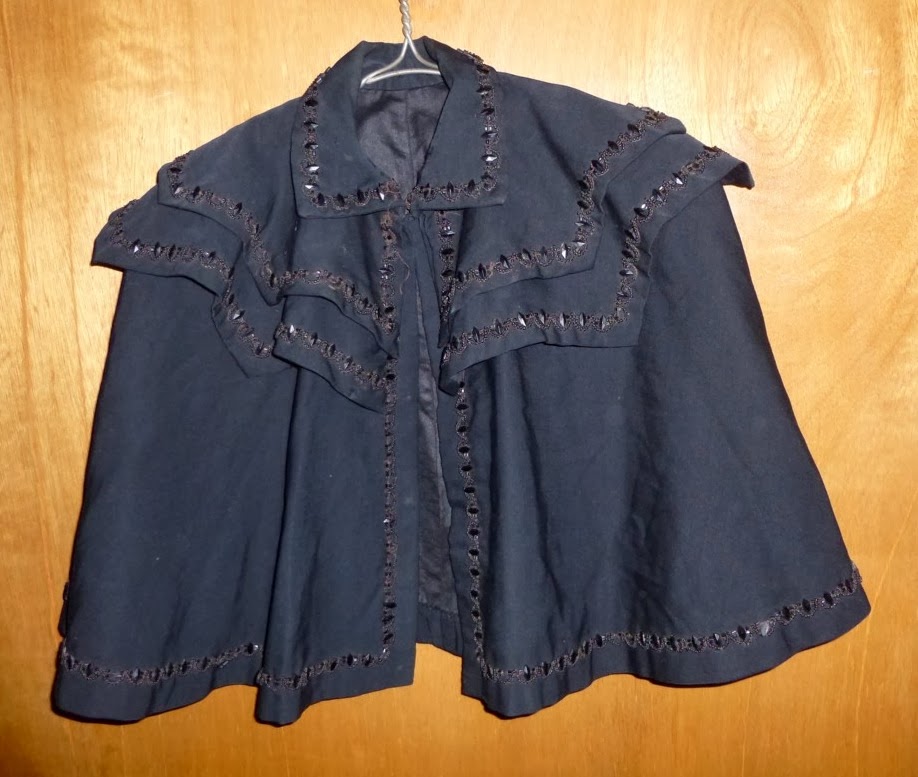I apologize for my absence.
I have been busy with school things again and am behind on my own sewing projects.
I am not off to a very good start on the HSF '14. The first project was late, I missed the second one, and there is no way I will finish the third one on time. As I am frequently informed that school is the higher priority, I will not be able to complete as many of the challenges as I would like. I am, however, hoping to have a linen shirt finished in time for #4.
Now, since I have no posts on actual sewing, here is another thing from the Old Stuff Collection. I found this capelet in a trunk in my Grandparent's attic.
Isn't it marvelous? It would have looked very nice with the reticule that was in the same trunk.
I'm not sure what date it's from, but it looks like either very late 19th century, or very early 20th century. There were tiered capelets around at that time, but I haven't seen any others with inward curves and beads, nor with this kind of spacing. I am not particularly knowledgeable about this era. Can any of you help narrow down the date?
 |
| Madame Demorest's Illustrated Portfolio of the Fashions For 1880. (Source) |
 |
| The Ladies Home Journal, March, 1898. (source) |
The large piece is about 3/4 of a circle. The two smaller ones are a bit longer. All three tiers are seamed in the centre back. The major seams are all machine sewn.
There is one hook & eye closure at the base of the collar.I'm not exactly sure what the fabric is, but judging from the rough texture I think it might be a very fine wool.
The beads are a pre-made trim that has been couched on. It has 3 different kinds of glass (or maybe jet?) beads. Many of the large ones have fallen off.
The stitching holding the trim on is uneven and shows on the wrong side in a few places, especially under the collar. It's attached with brown thread.
 |
| You can see the couching in this picture. |
The middle tier is tacked to the front edge of the bottom tier, just past the trim.
 |
| It's attached on both sides. |
The lining is a very shiny cotton twill. The hems of the top two tiers are very nicely finished with wide bias strips of the same materials.
The hem of the bottom tier is simply turned up once and finished with a cross stitch.
The collar is almost perfectly rectangular, and doesn't feel like it has much stiffening in it at all.
 |
| You can see the hook in this picture, attached with a big snarl of brown thread. |
It looks as though whoever made this capelet ran out of black thread before they were finished.
 |
| This dart is finished partly in black thread, and partly in brown. |




































